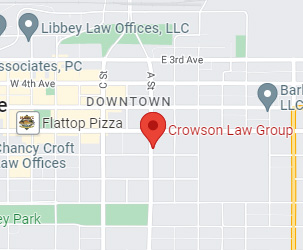Medical Malpractice: Patient Misdiagnosis Pt. 1

Reports show that a large number of medical malpractice lawsuits are the result of misdiagnosis or delayed diagnosis of a medical condition, illness or injury. When a doctor’s diagnosis error results in incorrect treatment, delayed treatment, or no treatment at all, a patient’s condition can be made worse and can even result in death. However, a mistaken diagnosis, by itself, is not enough to sustain a medical malpractice lawsuit. This article and a subsequent one will discuss what a patient needs to prove in a medical malpractice lawsuit related to a misdiagnosis and the different types of diagnostic errors.
It is important to realize that the law does not hold doctors legally responsible for all diagnostic errors. Rather, patients usually need to prove three things in order to bring a successful medical malpractice lawsuit based on a misdiagnosis:
- A doctor-patient relationship existed
- The doctor was negligent, and as a result did not provide treatment in a reasonably skillful and competent way
- The doctor’s negligence caused actual injury to the patient
With respect to negligence, it is important to realize that misdiagnosis or delayed diagnosis is not evidence of negligence. Skillful doctors can and do make diagnostic errors even when using reasonable care. However, the key is determining whether the doctor acted competently. This aspect involves an evaluation of what the doctor did and did not do in coming up with a diagnosis. Therefore, this means looking at the differential diagnosis method used by the doctor in making treatment determinations.
By definition, differential diagnosis is a systematic method used by doctors in order to identify a disease or condition in a patient. The diagnosis is made based on a preliminary evaluation of the patient and thereafter, the doctor makes a list of diagnoses in order of probability. The doctor then tests the strength of each diagnosis by making further medical observations of the patient which would entail asking detailed questions about symptoms and medical history, ordering tests or referring the patient to specialists. In an ideal situation, a number of potential diagnoses will be ruled out as the investigation progresses and only one diagnosis will remain at the end. However, as a result of the uncertain nature of medicine, this is not always the case.
In some cases, after further investigation the doctor may discover other information that will cause him or her to add to the differential diagnostic list. With respect to a medical malpractice case based on diagnostic error, the patient has to prove that a doctor in a similar specialty, under similar circumstances would not have misdiagnosed the patient’s illness or condition. For all practical purposes, this means the patient needs to prove one of two things:
- That the doctor did not include the correct diagnosis on the differential diagnosis list and a reasonably skilled, competent doctor under similar circumstances would have.
- The doctor included the correct diagnosis on the differential diagnosis list, however, the doctor failed to perform appropriate tests or seek opinions from specialists so as to investigate the viability of the diagnosis.
For a medical malpractice claim seek out a medical malpractice Anchorage attorney.


